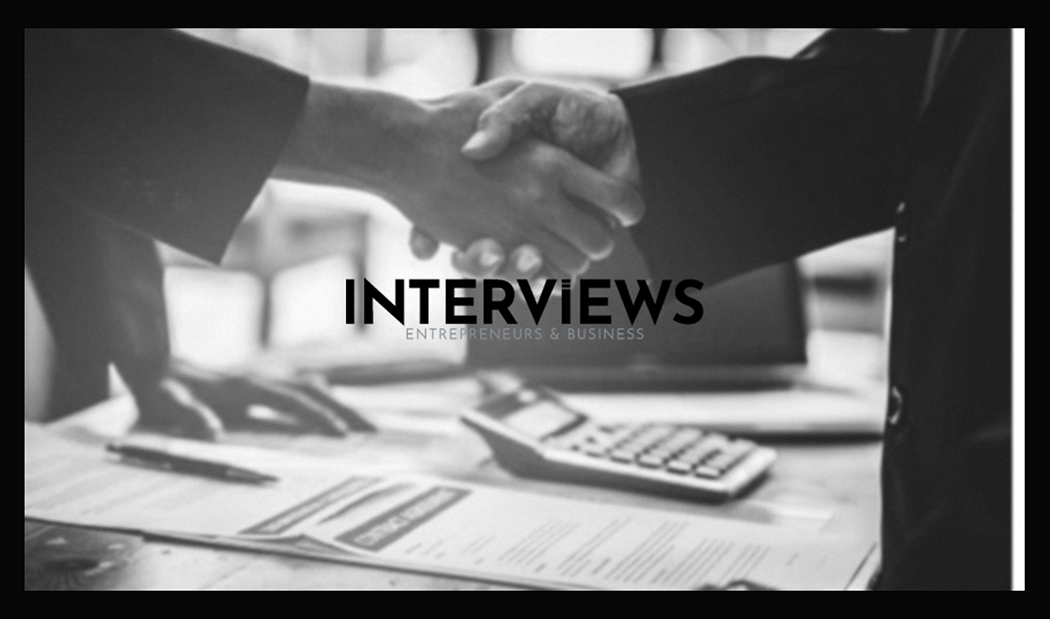Unlock the Art of Deal-Making: Your A-Z Guide to Negotiation Mastery
Ever feel like you’re missing out? Maybe you just want to win without chaos at the table? Negotiation is not just for those in suits. It’s a vital skill. It’s as essential as knowing your coffee machine and possibly even trickier.
Whether you’re negotiating for a raise, hunting for a discounted sofa, or choosing a movie for Friday night, knowing how to negotiate is vital. This is your playbook. It’s filled with practical tips to help you shift from a ‘yes’ person to a ‘yes, here’s why we both win‘ expert.
Decoding Negotiation Skills & Strategies: Your Toolkit for Success
The Foundational “3 C’s” of Negotiation: Your Starting Point
Think of the “3 C’s”: Compromise, Collaboration, and Communication. They aren’t just buzzwords. They’re the foundation for achieving what you want and keeping others happy.
- Communication: Obvious, right? We mean effective communication. This involves real listening, not just waiting to speak. It’s about grasping where the other side comes from and their needs. Effective communication keeps negotiations running smoothly.
- Collaboration: Ditch the zero-sum mindset. Collaboration seeks a win-win. Focus on brainstorming together. Work towards solutions beneficial for everyone involved. It’s like baking a bigger pie instead of fighting over the last slice.
- Compromise: You won’t always get everything. Compromise is about giving a bit to gain more. It’s finding a middle ground where both parties feel they’ve won something, even if it’s not everything.
Core Negotiation Skills: Sharpen Your Edge
Active Listening: Hear More Than Just Words
Really listen. Pay attention, it’s not just nodding. Active listening means absorbing what’s being said. Understand underlying emotions. Show that you try to see their perspective. It builds trust and unearthed needs.
Building Rapport and Trust: It’s Not Just Business, It’s (Slightly) Personal
Negotiation isn’t a war. It’s a discussion. The key rule? Find common ground. Start by building rapport. Agree on something simple like the weather or a shared TV show. Early trust makes negotiations flow better and lead to good outcomes.
Key Negotiation Strategies: Your Playbook for Success
Preparation and Planning: Amateurs Wing It, Pros Prepare
Preparation is vital. Before negotiations, do your homework. Know your goals and those of others. Anticipate sticking points. Planning your moves acts like a map in a new city; you may get lost, but you improve your chances.
Flexibility: Bend, Don’t Break
Being rigid is a bad idea. Flexibility helps. Be ready to change strategy as new information appears. Sometimes great deals come from unexpected paths.
Persuasion, Patience, and Persistence: The “3 P’s” (Plus One!)
These ‘P’ words are powerful:
- Persuasion: It’s not manipulation. It’s guiding the other side to your view through logic, emotion, and humor.
- Patience: Great deals take time. Don’t rush. Sometimes waiting pressures the other side.
- Persistence: Don’t give up at the first hurdle. Be persistent without becoming a nuisance. Keep seeking solutions, even when tough.
- Patience (It’s that important!): Reminding again about the value of patience. Negotiation is not a sprint.
Adaptability and Open-Mindedness: Roll with the Punches
Plans go awry. Being adaptable helps navigate unexpected turns. Be ready to consider new ideas or options you hadn’t thought of before. The best results often emerge from unexpected changes.
Building a “Golden Bridge”: Make Saying “Yes” Easy
Ever seen someone cornered in a negotiation? “Building a golden bridge” provides a way out for them, helping them concede gracefully. It’s about framing concessions to benefit them. Make it easy for them to agree.
Knowing Your Worth (Especially in Salary Negotiations): Don’t Sell Yourself Short
Rule #1 in salary talks: Know your worth. State it confidently. Research your value. Don’t shy away from claiming what you deserve. If you don’t value yourself, why should they?
Maximizing Leverage: Play Your Strong Hand
Your leverage is your power in negotiation. Identify what you have that they want. It could be unique skills, their tight deadlines, or competing offers. Use this leverage smartly for the best outcomes.
Employing “Fair” Objective Criteria: Take Emotion Out of the Equation
Arguments based on emotions can be tricky. Instead, lean on objective criteria to support your stance. Market data and industry norms are examples of “fair” criteria that make arguments stronger and less personal. Facts help.
Designing an Offer-Concession Strategy: Plan Your Moves
Avoid winging your offers and concessions. Design a strategy. Set your opening offer, target outcome, and walk-away points. Plan concessions ahead. Understand what you can give and how much in increments. A strategy keeps you in control.
Focusing on Interests, Not Positions: Dig Deeper Than Surface Demands
Positions show wants; interests reveal needs. Instead of getting stuck on demands, explore underlying reasons. Focusing on interests opens creative problem-solving and solutions that meet everyone’s needs.
Being Willing to Make Concessions: Give a Little, Get a Lot
Negotiation is two-sided. Be ready to concede strategically. Concessions show goodwill. They inspire reciprocity from the other side but avoid excessive giveaways early on.
Negotiation Styles: Find Your Flavor (or Adapt as Needed)
Everyone negotiates differently. Knowing these styles helps you navigate various personalities:
- Cooperative: This style focuses on collaborative solutions. Cooperative negotiators often achieve better outcomes.
- Competing: This is a “win-lose” view. Competitive negotiators are assertive, maximizing personal gains often at the other’s expense.
- Collaborating: This is akin to cooperative but centers more on joint problem-solving and value creation.
- Compromising: The approach seeks quick agreements, often splitting the difference.
- Avoiding: The “ostrich” approach avoids conflict. Not always ideal, but sometimes necessary short-term.
- Accommodating:The “people pleaser” style emphasizes teammates’ needs.
- the other party’s needs and might sacrifice their own to keep harmony. This can work in relationship-focused negotiations. But, be cautious not to be exploited.
Rules and Principles: Unwritten Laws of Negotiation
The Golden Rule of Negotiation: Treat Others as You Wish
It’s powerful: Be fair, respectful, and collaborative. Treat others as you would want to be treated. This builds trust and goodwill. Trust leads to more positive outcomes. Karma points are included.
Information is Power: Data Detective Skills
Knowledge is king in negotiation. More information about the other party, market, and situation leads to stronger positions. Do your research. Ask questions. Be a data detective. Information helps set realistic goals and assess the other side’s offers.
The 70/30 Rule: Listen More Than Talk
Zip it! Listen 70% and talk 30%. It sounds easy but is tough in practice. Listening actively helps gather crucial information, grasp the other party’s perspective, and spot opportunities you miss if just talking.
The Pareto Principle (80/20 Rule): Focus on What Matters
80% of results come from 20% of efforts. Apply this in negotiation by identifying key issues for impact. Don’t get caught up in minor details. Focus on what truly matters.
The 3-Second Rule: Silence is Powerful
Awkward silences? Embrace them! Pause for at least 3 seconds after someone speaks. Silence creates space for reflection. It encourages the other party to fill the void, often revealing valuable information, and prevents impulsive reactions.
Negotiation Models and Frameworks: Structured Success Approaches
The Harvard Method: Respect and Problem-Solving First
This model stresses mutual respect and a problem-solving approach. It involves separating people from the problem, focusing on interests rather than positions, generating mutual gain options, and insisting on objective criteria. It’s a collaborative, principled approach.
The “4 C’s” Framework: Meaning and Utility
Interestingly, “4 C’s” signifies different frameworks:
- Contact, Know, Convince, Conclude: This framework builds customer relations in commercial negotiations. It stresses establishing contact, understanding needs, convincing on value, and concluding deals.
- Customer, Competition, Cost, Capabilities: This broader analysis framework considers key factors in planning. While not strict to negotiation models, understanding these “4 C’s” offers valuable insight in negotiations.
The “5 C’s” Framework: Holistic Perspectives
For a broader approach, consider the “5 C’s”: Communicate, Collaborate, Compromise, Stay Calm, Embrace Change. These guiding principles help navigate the negotiation process effectively. Staying calm and embracing change is useful when tensions rise.
The “3 C’s” Framework: Back to Basics
Those foundational “3 C’s” (Compromise, Collaboration, Communication) emerge again! These core elements remind you to stay focused during negotiations.
The “5 P’s” Framework: A Strategic Sequence
Want a step-by-step method? Consider the “5 P’s”:
- Preparation: Do your homework.
- Persuasion: Use logic and emotion.
- Persistence: Don’t quit easily.
- Patience: Take your time.
- Privilege: When having a special position (like being the only supplier), it may offer an advantage.
The “3 P’s” Framework (People, Problem, Process): Manage Negotiation
This framework centers on managing negotiation:
- People: Consider individuals involved – their personalities and emotions.
- Problem: Clearly define issues and focus on interests, not just positions.
- Process: Set clear rules and manage negotiation stages effectively.
Mintzberg’s 5 P’s of Strategy: Strategic Mindset
While primarily about strategy, Mintzberg’s “5 P’s” offer broader insights for negotiation:
- Plan: Your intended path of action.
- Ploy: Specific tactics to outmaneuver others.
- Pattern: Past behavior consistency.
- Position: Your location in the market/negotiation.
- Perspective: Your overall viewpoint and approach.
Elements of Negotiation: Building Blocks
The core components in every negotiation include:
- Interests: Underlying needs driving each party.
- Legitimacy: Use fair criteria to support proposals.
- Relationships: The connection between parties and its importance.
- Alternatives and BATNA (Best Alternative To a Negotiated Agreement): Your Plan B if negotiation fails. Knowing your BATNA is crucial – it’s your walk-away point.
- Options: Creative solutions that meet interests.
- Commitments: Agreements made and promises for future actions.
- Communication: Exchanging information throughout (yes, it’s fundamental).
Bargaining Power: Who Holds the Cards?
Bargaining power isn’t equal. The party with more resources usually has more leverage. Recognize power dynamics in negotiations and adjust your strategy. However, even with less power, skillful negotiation can balance risks.
Navigating the Negotiation Process: Step-by-Step
Stages of Negotiation: A Typical Roadmap
Negotiations often follow a predictable sequence:
- Preparation and Planning: (Yes, again! It’s THAT important) Research, set goals, and strategize.
- Definition of Ground Rules: Establish the agenda and process agreements.
- Clarification and Justification: Each party presents their case, clarifies positions, and justifies demands.
- Bargaining and Problem-Solving: The core – exchanging proposals, making concessions, seeking solutions.
- Closure and Implementation: Reach an agreement, formalize it, and act on it.
Key Negotiation Tools: Your Tactical Arsenal
ZOPA (Zone of Possible Agreement): Find the Sweet Spot
ZOPA is the range between each party’s walk-away points. This “zone” indicates where an agreement is viable. Identifying ZOPA is critical for negotiation success. Without it, agreement is unlikely unless one party changes their position.
BATNA (Best Alternative To a Negotiated Agreement): Walk-Away Power
BATNA is your Plan B if the negotiation fails. Knowing your BATNA gives you confidence. A strong BATNA bolsters your position; a weak one weakens it. Always strive to enhance your BATNA before and during negotiations.
Best Practices and Mistakes to Avoid: The Do’s and Don’ts
Negotiation Do’s: Your Recipe for Success
- DO Prepare: (Surprise!) Thorough preparation is essential.
- DO Know Your Bottom Line: Define your walk-away point – what’s the worst deal you’ll accept?
- DO Use a Friendly Approach: Be polite and create a positive atmosphere.
- DO Listen to Others: Actively listen and grasp their perspective.
- DO Consider All Options: Explore creative solutions beyond standard paths.
- DO Build Trust: Foster relationships based on trust.
- DO Be Polite: Manners count during tough negotiations.
Negotiation Don’ts: Steer Clear of Pitfalls
- Don’t Rush: Take your time. Avoid quick decisions under pressure.
- Don’t Take It Personally: Negotiation is business, not personal. Keep emotions in check.
- Don’t Accept a Bad Deal: Know your walk-away point. Be ready to leave if the deal isn’t right.
- Don’t Over-Negotiate: Pushing too hard can backfire and ruin the deal.
- DON’T Get Caught in Emotions: Stay rational. Manage feelings and avoid outbursts.
- DON’T Underestimate Your Worth: Know your value. Don’t hesitate to ask for it.
- DON’T Have an “All-or-Nothing” Mindset: Be flexible. Avoid rigid positions.
- Don’t Lowball (Too Much): Starting too low can harm trust and disrupt negotiations.
Important Negotiation Considerations: Beyond Tactics
Ethics: Negotiate with Integrity
Golden Rule #2: Build Trust. Ethical negotiation benefits your conscience and business. Long-term relationships thrive on trust and integrity.
Emotions: Manage Yours and Theirs
People have emotions. Negotiations aren’t purely rational. Be mindful of your emotions and the other party’s feelings. Manage emotions constructively to keep the process on track. Remember the “People” aspect from the “3 P’s” framework.
Timing: Strike While The Iron is… Warmish
Timing counts. The
The time of day, the day of the week, and even the season can affect the negotiation climate. Keep in mind the other party’s schedule, their deadlines, and outside pressures. Sometimes waiting for the right moment can provide an advantage.
Famous Negotiators: Learning from the Legends
Nelson Mandela: The Master of Patience and Persuasion
Nelson Mandela was famous for his patience, strategic thinking, and talent for persuasion. He changed adversaries into allies. His long walk to freedom was about negotiation. Persistence was key.
Madeleine Albright: Navigating Complex International Waters
Madeleine Albright was a diplomatic giant. She led many complex international negotiations. Her efforts to expand NATO and address the Kosovo crisis proved her skill. She achieved important objectives in challenging situations.
Essential Negotiation Books: Level Up Your Knowledge
- Mastering Negotiation Skills: 10 Best Negotiation Skills Book: (Pretty self-explanatory).
- Never Split the Difference: Negotiating As If Your Life Depended On It: High-stakes tactics from FBI negotiator Chris Voss for everyday life.
- Getting to Yes with Yourself—and Other Worthy Opponents: Internal negotiation that occurs before any actual negotiation.
- Negotiation Genius: How to Overcome Obstacles and Achieve Brilliant Results: Advanced techniques for difficult negotiations.
- Getting to Yes: Negotiating Agreement Without Giving In: The foundational text on principled negotiation by Roger Fisher and William Ury. Essential reading.
- Crucial Conversations: Tools for Talking When Stakes Are High: Important for navigating tough, emotional conversations intertwined with negotiation.
Persuasion Techniques: Winning Hearts and Minds
The Ancient Trio: Ethos, Pathos, Logos
Aristotle understood persuasion well. His three elements still matter today:
- Ethos: Credibility and authority. Be knowledgeable and trustworthy.
- Pathos: Emotion. Connect with feelings to persuade others. This is often the most effective tool.
- Logos: Logic and reason. Present facts, data, and arguments to back your position.
Additional Negotiation Concepts: Expanding Your Horizon
- Capitulation: Complete surrender. Avoid this unless necessary.
- Evade Strategy: Delay negotiation to cool emotions or gather information. Useful temporarily.
- Right of First Offer: A right to be the first offered an asset before others. This can be a significant advantage.
- Anchoring: Setting the first offer as a reference point. This greatly affects perceived value and future offers. Use it wisely!
You now have a complete guide to negotiation mastery. Go and negotiate like a pro. This could be your chance for that pay raise or to settle on a movie for Friday night.





